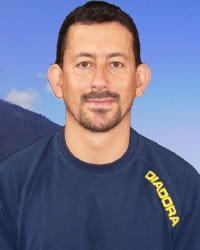Deaf in Ecuador

Photo Source:
Anonymous
|
Send Joshua Project a map of this people group.
|
| People Name: | Deaf |
| Country: | Ecuador |
| 10/40 Window: | No |
| Population: | 50,000 |
| World Population: | 27,508,450 |
| Primary Language: | Ecuadorian Sign Language |
| Primary Religion: | Unknown |
| Christian Adherents: | 0.00 % |
| Evangelicals: | 0.00 % |
| Scripture: | Portions |
| Ministry Resources: | No |
| Jesus Film: | No |
| Audio Recordings: | No |
| People Cluster: | Deaf |
| Affinity Bloc: | Deaf |
| Progress Level: |
|
Introduction / History
Deaf Ecuadorians are working hard to have Lengua de Señas de Ecuador LSEC), Ecuadorian Sign Language, recognized as a legitimate language. In 2010, there were approximately 213,000 Ecuadorian Deaf people according to Consejo Nacional de Discapacidades (CONADIS), the national disability organization. The largest Deaf population lives in Quito with the next largest populations living in Guayaquil and Cuenca.
The Federación Nacional de Sordos del Ecuador (FENASEC) began 25 years ago and strives to encourage sign language use and self-development among Deaf Ecuadorians and to implement a sign language development plan. FENASEC is working to create a LSEC dictionary and distribute it to schools, interpreters, and the general Deaf population by 2012. Lenín Moreno Garcés, the current Vice President of Ecuador, has advocated for disabled Ecuadorians, including Deaf people, increasing their voice in society.
Deaf people frequently meet together for soccer, association meetings, and other social events. All adults are required to work by law but higher-paying positions are difficult for Deaf people to obtain. Deaf people indicate that many can work their way to higher-paid positions after proving their skill level.
Most Deaf students attend Deaf -only or mixed-disability schools. The largest Deaf school that offers both primary and secondary education is located in Quito: Instituto Nacional de Audición y Lenguaje (INAL). Most of the Deaf schools use Total Communication as their method of communication in teaching; very few schools are bilingual. Some Deaf students are integrated into the regular school system which uses little sign.
Very few interpreters are available in Ecuador, and there are almost no opportunities for people to get professional training as interpreters. If Deaf people had increased access to interpreters, advanced educational opportunities and communication access to everyday life events would become available. The Deaf community indicates that their greatest needs are for educational materials of all kinds, religious and health materials, teacher training, and sign language classes for families with Deaf children.